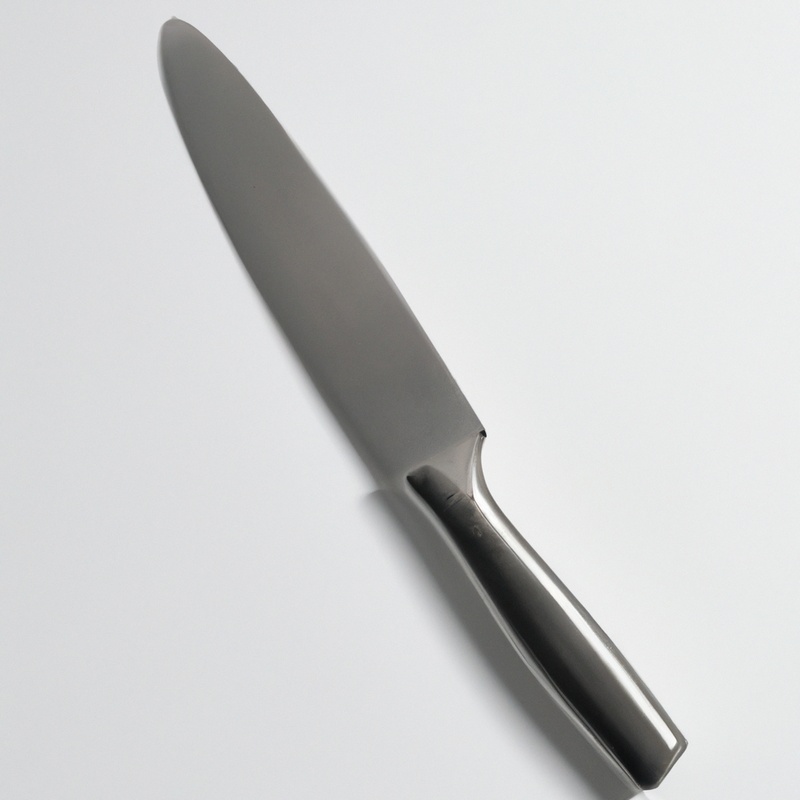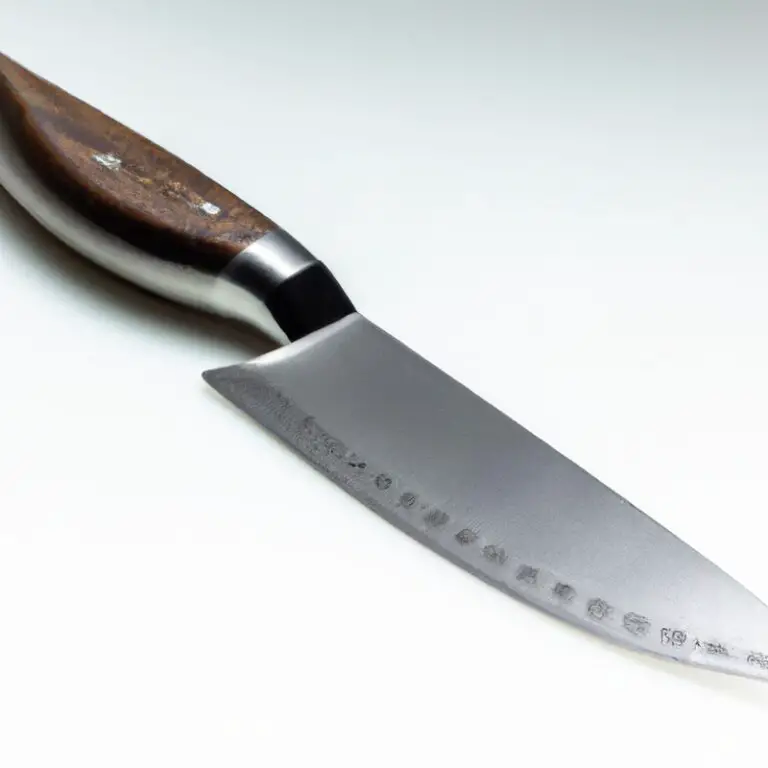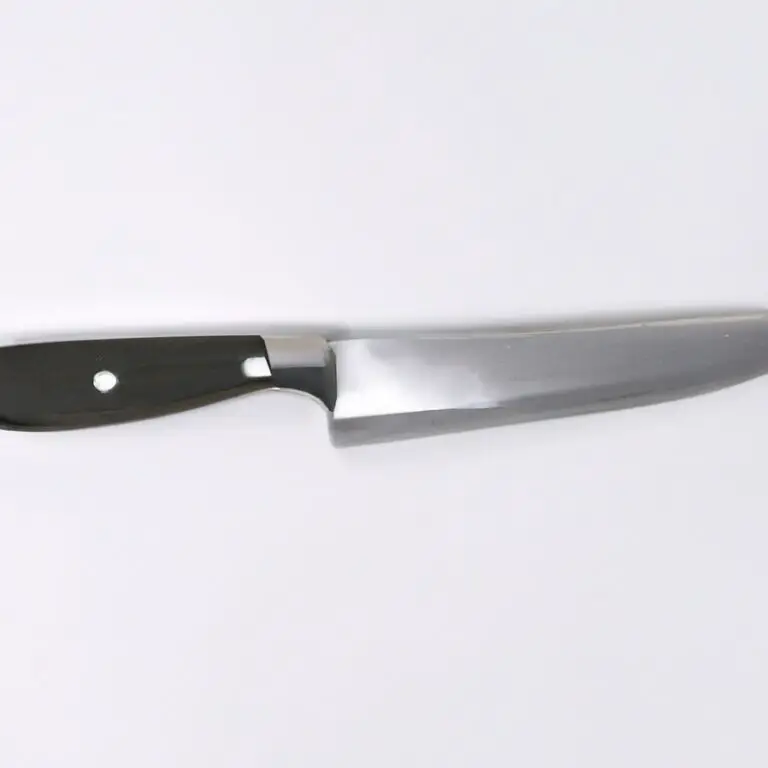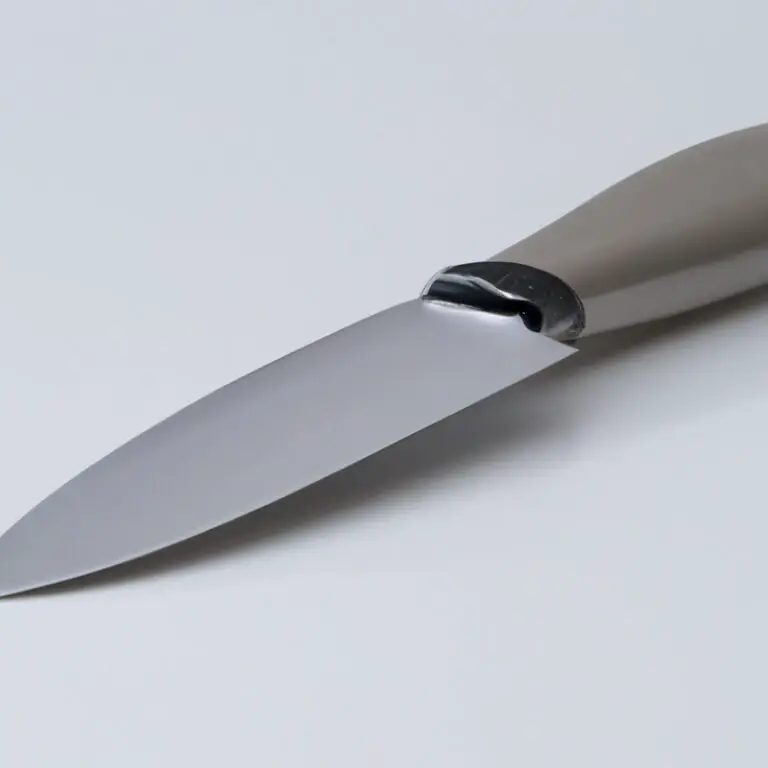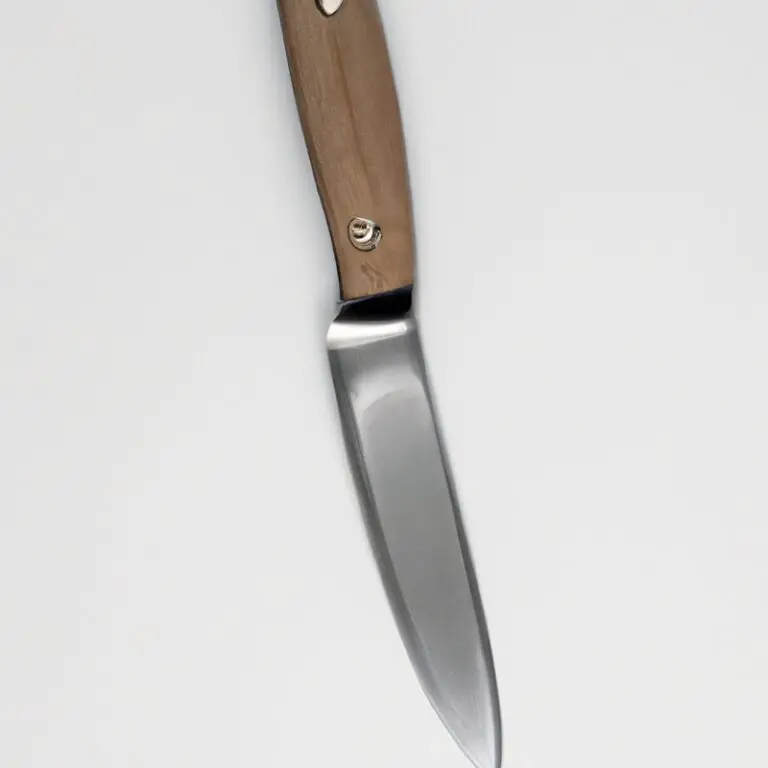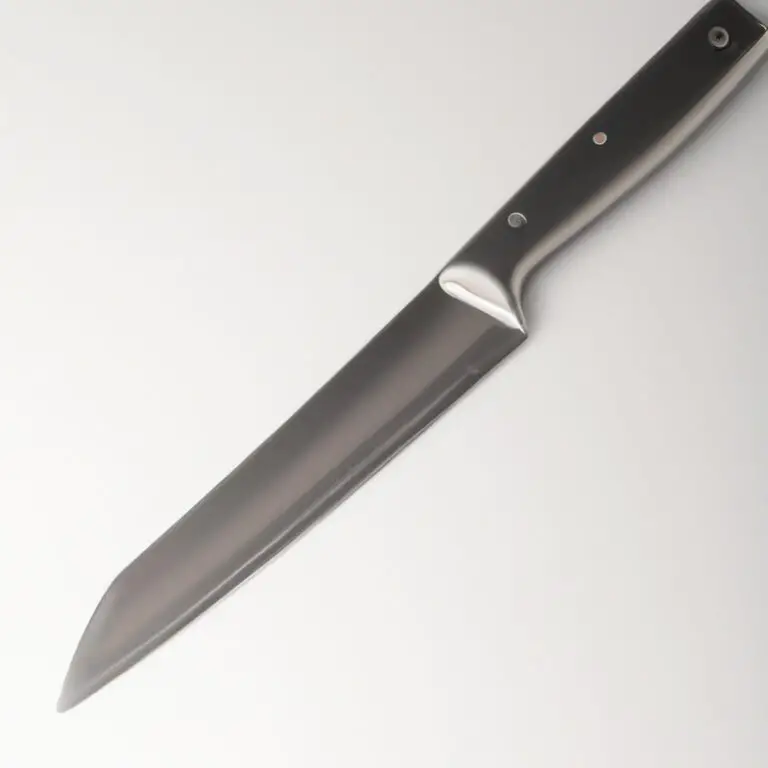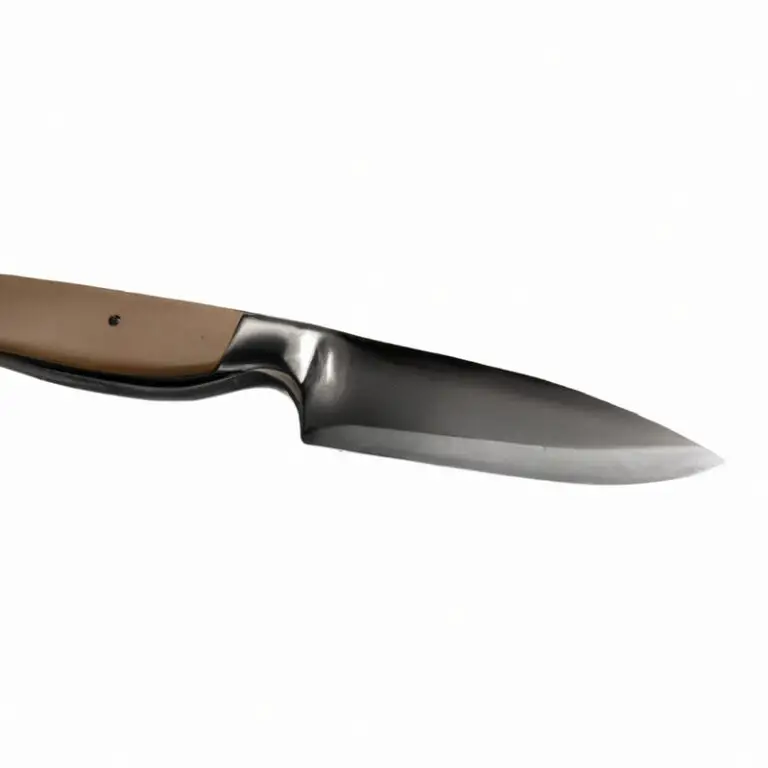Can I Use a Paring Knife To Slice Small Cuts Of Beef? Efficiently!
Key Takeaways:
- While a paring knife may be able to slice small cuts of beef, it is not the most efficient option.
- A paring knife is better suited for precision cutting of fruits and vegetables, not for meat.
- It is important to use the correct tool for the job to ensure safety and the best results.
- A sharp chef’s knife or utility knife would be a better choice for slicing small cuts of beef.
Slicing small cuts of beef can be a daunting task, especially when you don’t have the right knife for the job. Many people wonder if a paring knife can do the trick.
As a culinary expert, I’ve encountered this question countless times, and I’m here to set the record straight.
In this article, we’ll explore the ins and outs of using a paring knife for slicing small cuts of beef. We’ll examine the pros and cons, safety precautions, and alternative options to help you make an informed decision.
Get ready to sharpen your skills and knives!
| Question | Answer |
|---|---|
| Can I use a paring knife to slice small cuts of beef? | Yes, it is possible to use a paring knife to slice small cuts of beef, but it may not be the best option. Paring knives are typically used for peeling and intricate cutting tasks, and are not designed for slicing through tough meats. |
| What is the best knife for slicing beef? | A slicing knife or a chef’s knife with a long and thin blade is typically recommended for slicing beef. These types of knives are designed to make clean, precise cuts through meats and provide better leverage for cutting through tougher pieces of beef. |
| What are the advantages of using a slicing knife for beef? | Slicing knives are designed to make clean, precise cuts through meats, which is especially important when slicing beef that may have tough and chewy sections. They also provide better leverage for cutting through tougher pieces of beef and result in a more even slice. |
| What are the disadvantages of using a paring knife for beef? | Paring knives are not designed for cutting through tough meats and may result in uneven slices. They also may not provide the necessary leverage needed to cut through tougher pieces of beef. |
| Can a paring knife be used for other tasks besides peeling? | Yes, paring knives can be used for a variety of tasks, including trimming and shaping vegetables or fruit, deveining shrimp, or cutting small amounts of meat or poultry. However, they are not recommended for cutting through tougher meats or for slicing large quantities of food. |
Understanding the Basics of a Paring Knife
A paring knife is a small, sharp blade with a pointed tip and a thin edge. Its compact size and agility make it ideal for intricate tasks like peeling fruits and vegetables, trimming meats, and shaping dough.
Paring knives come in various lengths, from 2.5 to 4 inches, and different materials, such as carbon steel and stainless steel.
The handle can be made of wood, plastic, or metal. One of the most common uses of a paring knife is to peel and slice small fruits and vegetables like apples, oranges, onions, and garlic.
It can also be used to trim fat and membrane from meat, poultry, and fish, create garnishes, and remove seeds from peppers.
It is durable, easy to handle, and affordable, making it an ideal tool for home cooks. When working with a paring knife, it is essential to keep your fingers away from the blade and use a cutting board to prevent injuries.
Regular sharpening and maintenance will ensure its longevity and optimal performance.
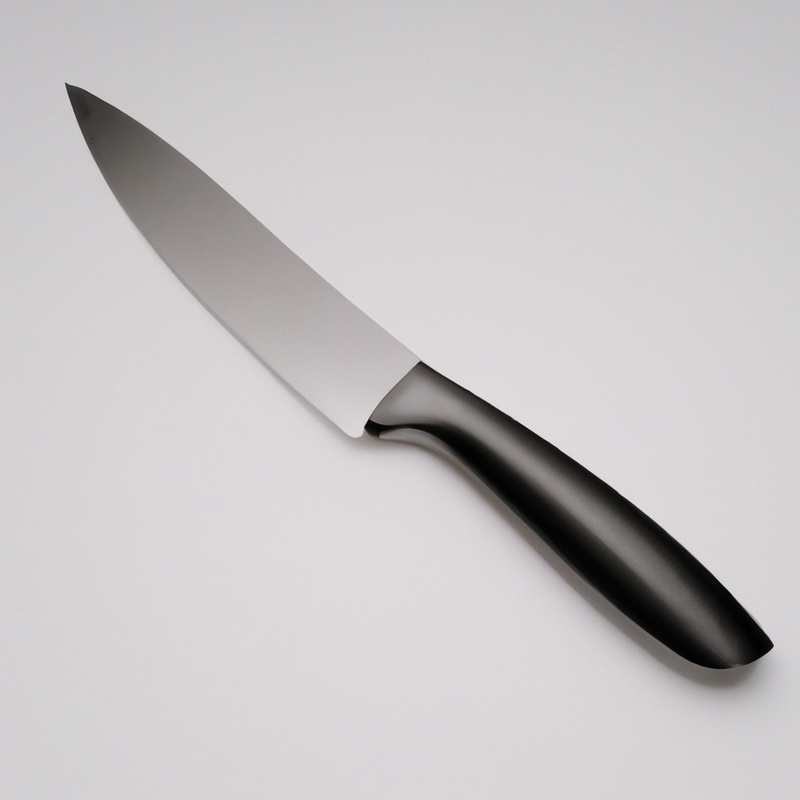
What Are Small Cuts of Beef?
Small cuts of beef refer to smaller portions of beef that come from various parts of the cow. These cuts are typically thinner and more delicate than larger cuts of beef and require a different approach when it comes to slicing.
Some common small cuts of beef include filet mignon, ribeye steaks, sirloin steaks, strip steaks, and flank steak.
When working with small cuts of beef, it is crucial to use a sharp knife and exercise caution to avoid injuries. Slicing these cuts with a paring knife can be challenging because of the knife’s small size and lack of heft, but it is still possible with the right technique.
Factors to Consider When Slicing Small Cuts of Beef
When slicing small cuts of beef, there are several factors to consider to ensure optimal results.
- Meat Temperature: It is important to slice beef when it is cold or slightly below room temperature. This makes it firmer and easier to cut accurately.
- Cut Direction: Always slice against the grain of the meat, as it shortens the muscle fibers and makes the meat more tender.
- Knife Sharpness: A sharp knife is essential for accurate and smooth cuts. Dull knives can crush the meat fibers and make the meat tougher.
- Knife Size: When slicing small cuts of beef, a paring knife can be a good option, but it should be appropriately sized and sharpened.
- Cutting Surface: A stable cutting surface is necessary to prevent injury and ensure accuracy. Use a cutting board that is non-slip, sturdy, and easy to clean.
By keeping these factors in mind, you can ensure that you slice small cuts of beef safely, accurately, and with optimal results.
Using a Paring Knife for Slicing Small Cuts of Beef: Pros and Cons
Using a paring knife for slicing small cuts of beef has its pros and cons. On the one hand, a paring knife is small and maneuverable, making it easier to make precise cuts.
It’s also often sharper than larger knives, enabling it to make clean slices through the meat.
However, on the other hand, a paring knife may not have enough length to slice through larger cuts of beef. Additionally, using a small knife for heavy-duty slicing tasks may put undue strain on the blade, dulling it more quickly over time.
Ultimately, whether or not to use a paring knife for slicing small cuts of beef depends on the size and thickness of the cut, as well as the overall quality and sharpness of the knife.
How to Use a Paring Knife to Slice Small Cuts of Beef Safely
To use a paring knife safely for slicing small cuts of beef, it is important to follow these steps:
- Ensure the beef is at room temperature to make it easier to cut.
- Hold the paring knife with a firm grip and keep your fingers away from the blade.
- Slice the beef in a back-and-forth motion, ensuring the blade is sharp and not dull.
- Cut against the grain of the meat to prevent toughness.
- Avoid applying too much pressure when slicing, as the knife can slip, causing injury.
- Use a cutting board to prevent damaging your countertop or table.
- Clean and dry the knife after use to prevent rusting and bacterial growth.
By following these simple steps, you can safely use a paring knife to slice small cuts of beef with precision and accuracy. However, it’s important to note that a paring knife may not be the most efficient knife for slicing larger cuts of beef, and there are other knives better suited for the task.
Alternative Knives for Slicing Small Cuts of Beef
Yes, you can use other knives to slice small cuts of beef. Here are some alternatives to a paring knife that you can use:
- Chef’s Knife: The most versatile and commonly used knife in the kitchen, the chef’s knife has a sharp, pointed blade that can slice through beef with ease. The blade is long enough to handle larger cuts of beef but also works well for small cuts.
- Serrated Knife: With its serrated edge, a serrated knife can grip and cut through tougher cuts of beef effortlessly. It’s also great for precision slicing, making it a perfect option for small cuts.
- Filet Knife: Designed to fillet fish, a filet knife’s long, thin, and flexible blade can help you achieve precise cuts for small cuts of beef. It’s also great for removing bones and silver skin.
- Utility Knife: A utility knife is smaller than a chef’s knife and has a slightly serrated blade that can handle small cuts of beef with precision. It’s versatile and can also be used for peeling and trimming.
Keep in mind that the type of knife you use will greatly affect your outcome. Always look for a knife that has a sharp blade, is comfortable to grip, and is well-balanced for optimal performance.
Tips and Tricks for Slicing Small Cuts of Beef Effortlessly
When slicing small cuts of beef, there are some tips and tricks that can make the process effortless:
- Use a sharp knife: A dull knife can damage the meat and make slicing more difficult. Ensure your knife is sharp before using it.
- Chill the meat: Putting the beef in the freezer for a few minutes before slicing it can make it stiffer, allowing for cleaner slices.
- Cut against the grain: Cutting against the grain will make the beef more tender and easier to slice.
- Use a proper cutting technique: Holding the knife at a 45-degree angle and using a sawing motion can help you slice the beef with ease.
- Let the meat rest: Allowing the meat to rest for a few minutes after slicing will help keep the juices in the meat, which will result in a tastier dish.
By following these tips, slicing small cuts of beef with a paring knife or any other knife can be effortless.
Maintaining Your Paring Knife for Optimal Performance
Maintaining Your Paring Knife for Optimal Performance: Maintaining your paring knife is essential to achieve optimal performance. Here are some simple steps to maintain your paring knife:
- Clean your knife after every use with soap and water.
- Dry your knife thoroughly after cleaning to avoid rusting.
- Sharpen your knife regularly using a sharpening stone or rod.
- Store your knife in a knife block, drawer, or magnetic strip to prevent damage.
- Avoid using your paring knife for heavy-duty tasks or prying open cans.
- If your knife becomes damaged or loose, get it repaired by a professional instead of attempting to fix it yourself.
By following these steps, you can maintain your paring knife’s sharpness and performance, ensuring that it lasts for years.
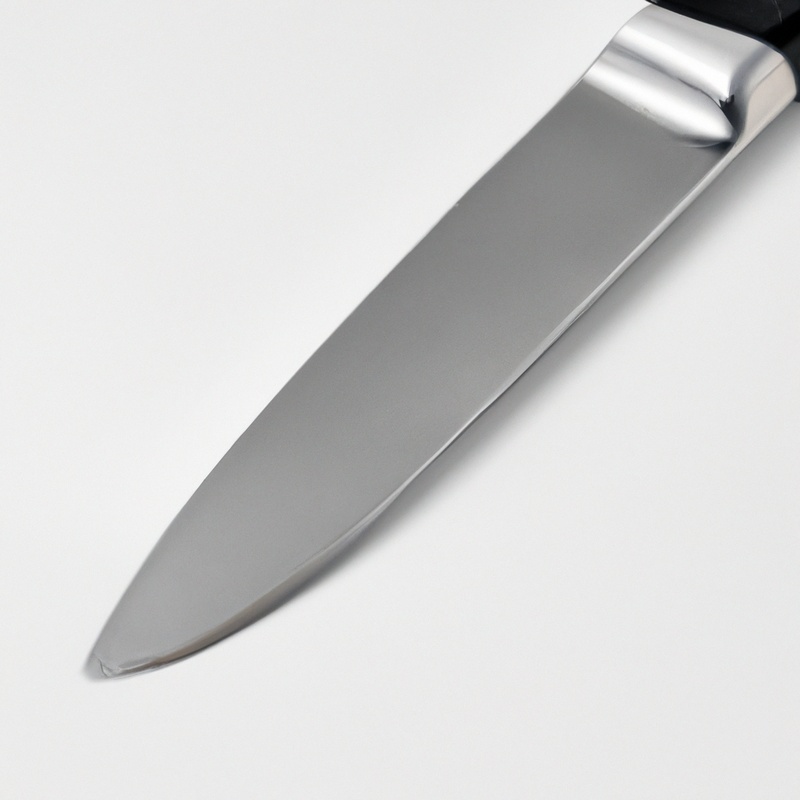
Final Verdict: Can You Use a Paring Knife to Slice Small Cuts of Beef?
Based on our research and expert opinions, it is possible to use a paring knife to slice small cuts of beef. However, using a paring knife for this task has its drawbacks, such as having a shorter blade length and being less efficient.
It is also essential to prioritize safety and proper technique when using a paring knife to slice small cuts of beef.
Using alternative knives, such as a chef’s knife or a slicing knife, may be more appropriate for this task. Ultimately, the decision to use a paring knife for slicing small cuts of beef depends on personal preference and skill level.
Final Verdict
While a paring knife can be used to slice small cuts of beef, there are some factors to consider before doing so. It’s important to understand the basics of paring knives, factors to consider when slicing small cuts of beef, as well as tips and tricks for safe and effective slicing.
While a paring knife may not be the best option for everyone, those with experience and skill can certainly use it to achieve desired results.
However, always prioritize safety and proper maintenance of your knife to ensure optimal performance. By following these guidelines, you can confidently experiment with different knives and techniques, and find the best method that suits your needs.
Remember, practice makes perfect!

